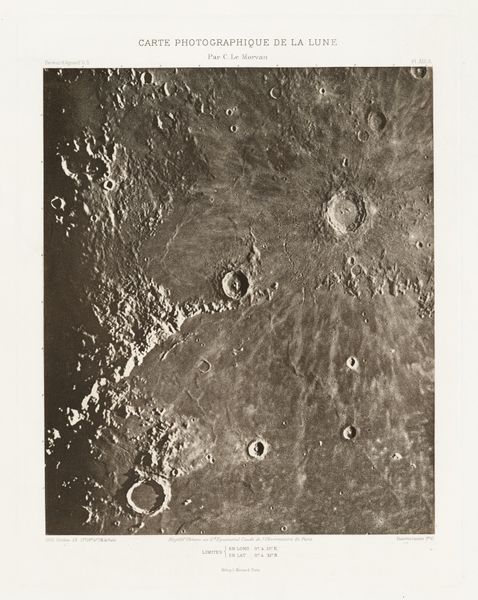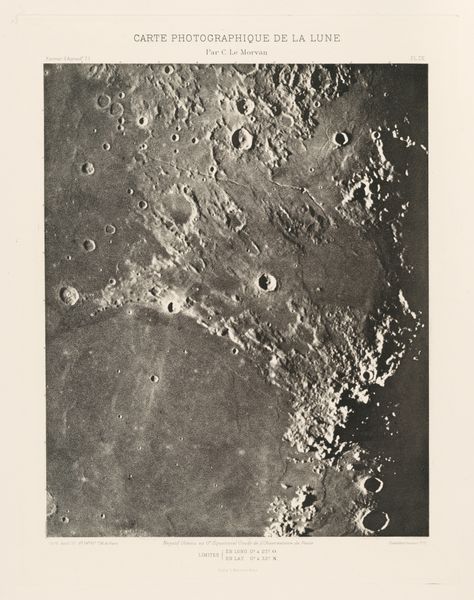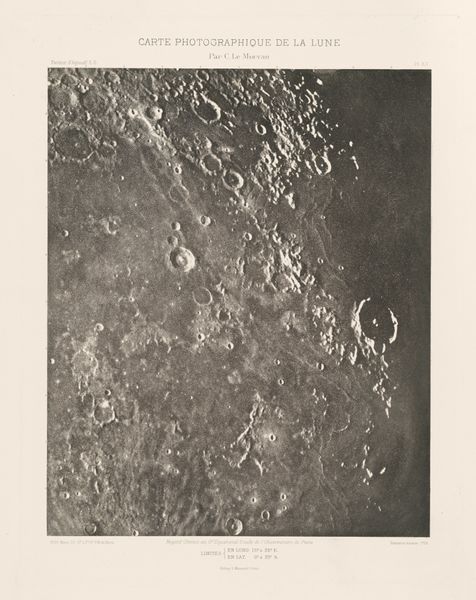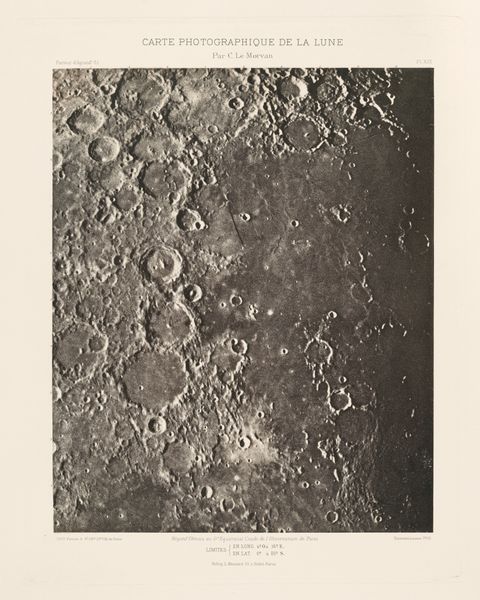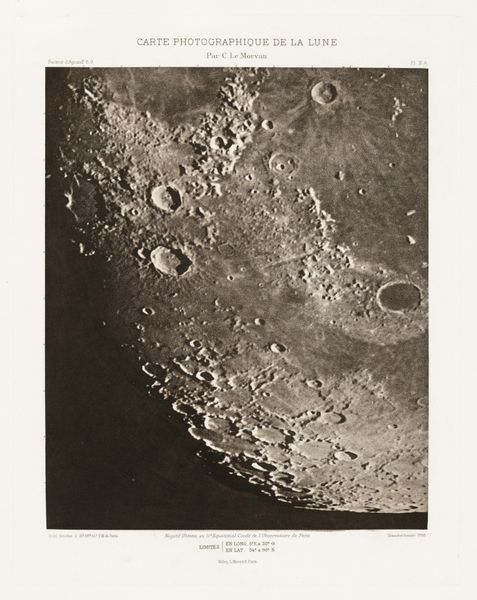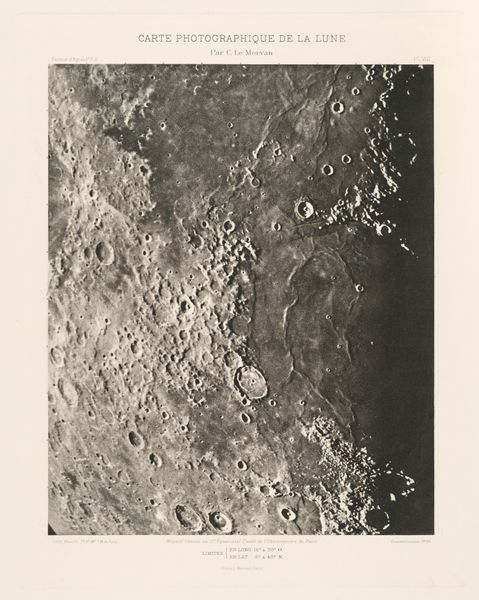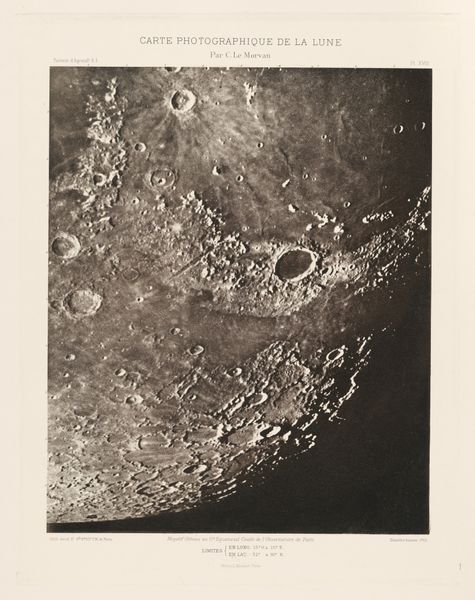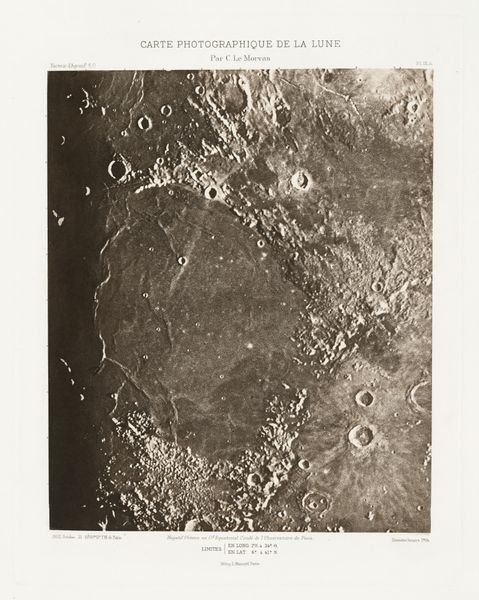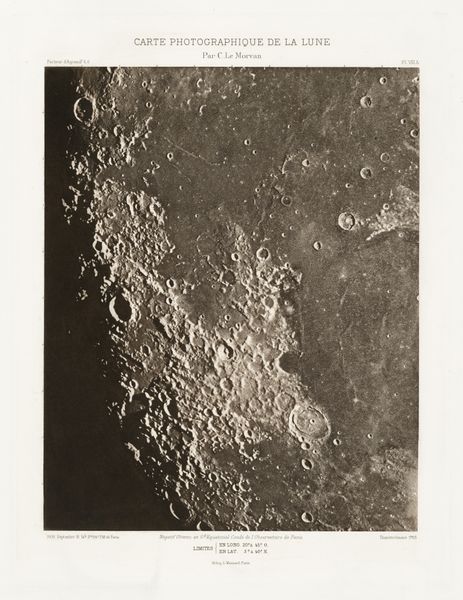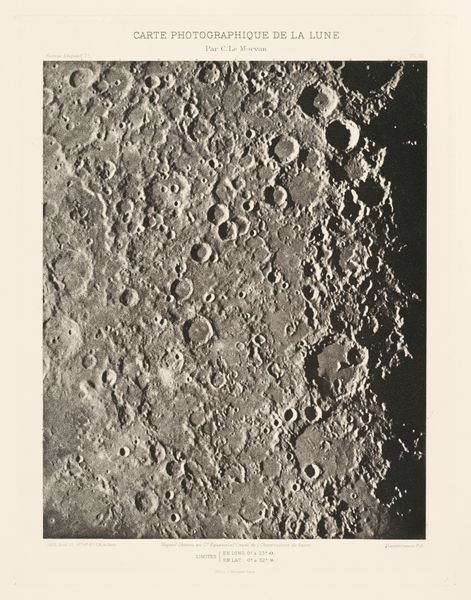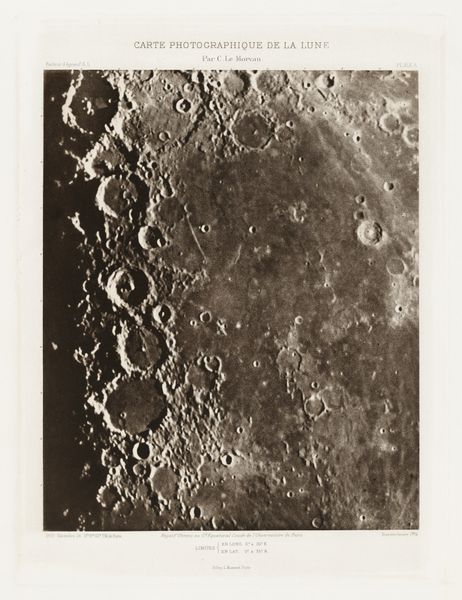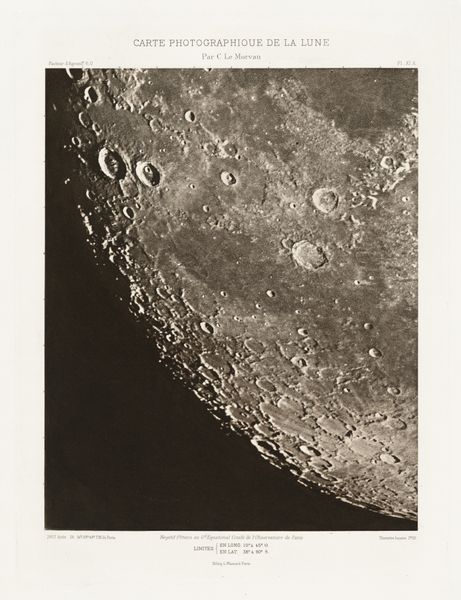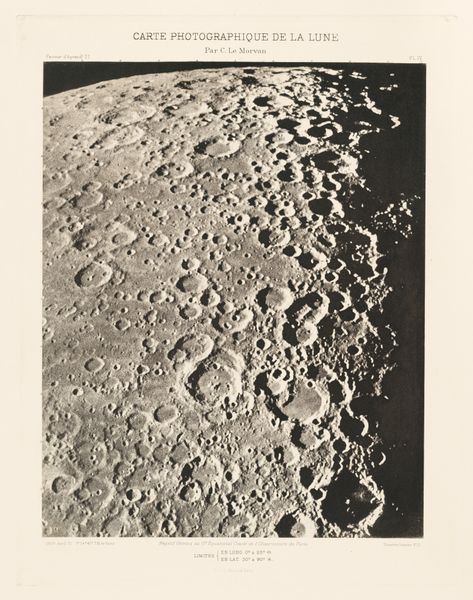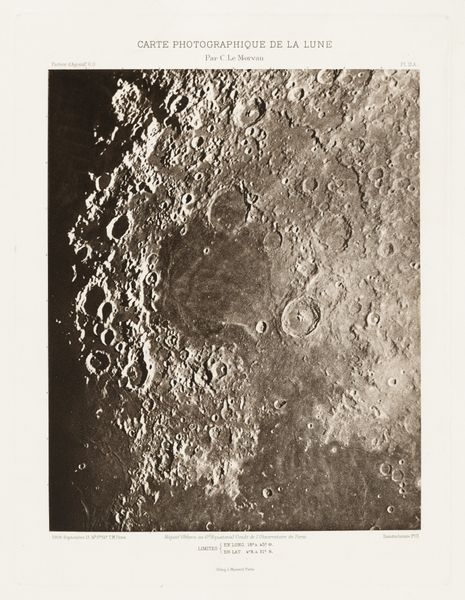
Carte photographique de la lune, planche XIII (Photographic Chart of the Moon, plate XIII) Possibly 1903 - 1914
0:00
0:00
print, photomontage, photography
# print
#
photomontage
#
landscape
#
photography
#
realism
Dimensions: image: 31.1 × 25.5 cm (12 1/4 × 10 1/16 in.) plate: 38.9 × 29.5 cm (15 5/16 × 11 5/8 in.) sheet: 49 × 37.9 cm (19 5/16 × 14 15/16 in.) tissue: 42.55 × 37.47 cm (16 3/4 × 14 3/4 in.)
Copyright: National Gallery of Art: CC0 1.0
Editor: We're looking at "Carte photographique de la lune, planche XIII," a photographic print, or rather, a photomontage, created by Charles Le Morvan sometime between 1903 and 1914. It depicts the surface of the moon. I find the image strangely compelling, both scientific and a little eerie. What draws your eye to this particular piece? Curator: What an extraordinary endeavor, capturing the moon's desolate beauty with early photographic techniques. Look at the stark contrast – the deep shadows that give such weight to the craters, versus the light, almost ethereal plains. Doesn't the surface remind you of ancient scripts, almost as if messages are embedded into the lunar dust? Consider how different cultures throughout history projected their hopes, fears, and mythologies onto the moon. This photograph carries that weight, doesn't it? Editor: Yes, I see that. It feels almost like a palimpsest, layered with meaning over time. Curator: Exactly! Each crater, each shadow, becomes a signifier. Notice also how the composition invites your gaze to wander, searching for something familiar yet entirely alien. In what ways might this lunar landscape reflect humanity's own search for understanding? Editor: So, the symbolic significance isn't just about what we project onto the moon, but also how it mirrors our own internal landscapes? Curator: Precisely. Le Morvan’s work, through the cultural symbol of the moon, provides us with a powerful tool to observe ourselves and the evolution of cultural memory. Editor: I hadn't considered that angle before. I was so focused on the technical aspect. It gives me a lot to think about! Curator: Indeed. The intersection of science, symbolism, and human experience captured in this image is profound.
Comments
No comments
Be the first to comment and join the conversation on the ultimate creative platform.
